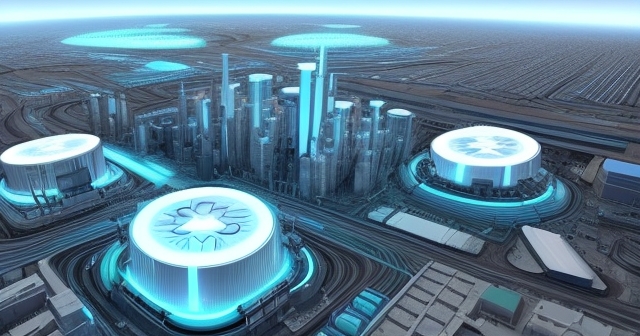Unlocking the Power Within: Navigating the Complex World of Lithium
Welcome! Today, we’re embarking on a journey to understand a fascinating element that is quietly, yet profoundly, reshaping our world: Lithium. Often called “white gold” or “the new oil,” Lithium is far more than just a metal you might have learned about in chemistry class. It’s a critical mineral powering the technologies that underpin our modern lives and enabling the global transition towards cleaner energy. But its story isn’t just about innovation; it’s also about resources, extraction challenges, geopolitical dynamics, and the urgent need for sustainable solutions. As investors and forward-thinkers, grasping the nuances of Lithium’s supply chain and market is becoming increasingly essential. So, let’s dive in and explore this indispensable element together.
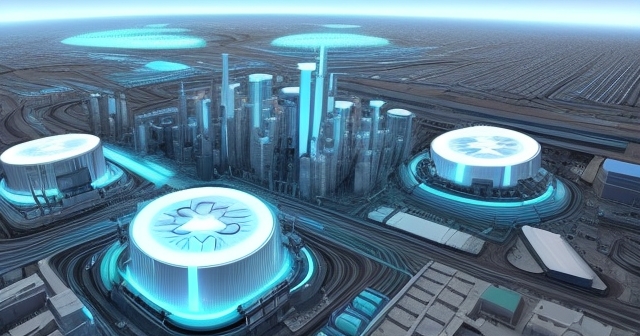
Let’s start with the basics. What is Lithium? From a chemist’s perspective, Lithium (symbol Li, atomic number 3) is a chemical element. It’s the lightest of all metals and belongs to the alkali metal group, found on the left side of the periodic table along with elements like Sodium and Potassium. If you were to encounter it in its pure metallic form, which is rare in nature because it’s highly reactive, you’d find a soft, silvery-white metal that reacts vigorously with water and even tarnishes in air. Its low density makes it unique among metals.
- Lithium is classified as an alkali metal, which exhibits high reactivity.
- It is primarily used in battery technology, especially Lithium-ion batteries.
- The element plays a vital role in various industries, including pharmaceuticals and electronics.
From a practical standpoint, however, the definition expands. Merriam-Webster defines Lithium not just as the chemical element but also specifies its uses: “a chemical element that is used in alloys, glass, lubricants, and especially in storage batteries or as a salt used in psychiatric medicine.” This latter part of the definition hints at its diverse applications, from industrial uses and medicine to, most crucially today, powering rechargeable batteries.
Discovered in 1817 by Johan August Arfwedson and isolated shortly after by J.J. Berzelius, Lithium remained a relatively obscure element for decades. Early uses included lubricants, ceramics, and glass manufacturing. Its application in psychiatric medicine, particularly in the form of Lithium salts like Lithium carbonate, for treating bipolar disorder, dates back to the mid-20th century and remains a significant medical use. However, it was the development of Lithium-ion battery technology in the late 20th century that truly catapulted Lithium from relative obscurity to global strategic importance.
Understanding Lithium means understanding its dual nature: a fundamental element with specific chemical properties, and a vital commodity whose value is increasingly defined by its technological applications and the complex processes required to extract it from the Earth.

There’s no doubt about it: the primary driver behind Lithium’s skyrocketing demand is the battery industry. Specifically, the rechargeable Lithium-ion battery. You are likely using devices powered by Lithium-ion batteries right now – your smartphone, laptop, perhaps a tablet. These batteries are ubiquitous in portable electronics because they offer a high energy density, meaning they can store a lot of energy for their size and weight, and they maintain their charge well.
However, the real game-changer is their application in electric vehicles (EVs). As the world moves away from internal combustion engines to combat climate change and reduce air pollution, EVs are rapidly becoming mainstream. A typical electric car requires a battery pack containing tens, or even hundreds, of kilograms of Lithium compounds. Compare this to the grams of Lithium in a smartphone battery, and you can quickly see why the growth in EV production translates into an enormous surge in Lithium demand.
| Device Type | Lithium Content (kg) |
|---|---|
| Smartphone | 0.3 |
| Laptop | 0.5 |
| Electric Vehicle | 50-100 |
Beyond personal transport, Lithium-ion batteries are also critical for grid-scale energy storage. Renewable energy sources like solar and wind are intermittent – they only generate power when the sun shines or the wind blows. To create a stable and reliable energy grid powered by renewables, we need massive battery systems to store excess energy generated during peak production times and release it when demand is high or generation is low. These large-scale energy storage systems rely heavily on Lithium-ion technology, adding another layer to the demand narrative.
The International Energy Agency (IEA) and other bodies project that clean energy technologies, predominantly batteries for EVs and grid storage, could account for up to 90% of future Lithium demand. This makes Lithium an indispensable component of the global energy transition. Its role is not just supporting existing technology; it is actively enabling the creation of a new, electrified future. The shift we are witnessing is fundamental, positioning Lithium at the heart of our future energy infrastructure.
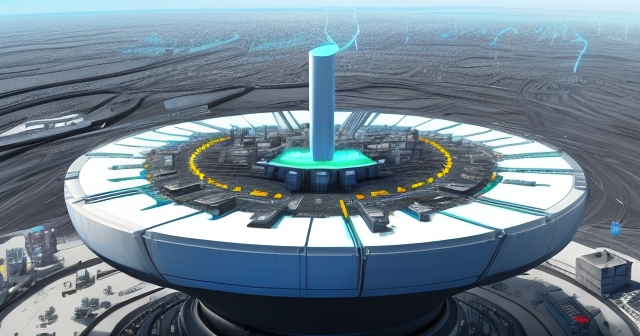
While batteries dominate the headlines, it’s crucial to understand that Lithium’s strategic importance extends into another highly critical sector: the nuclear industry. Here, specific isotopes of Lithium play vital, often overlooked, roles. An isotope is a variant of a chemical element with the same number of protons but a different number of neutrons. Lithium has two stable isotopes found in nature: Lithium-6 (Li-6) and Lithium-7 (Li-7).
Lithium-7 is particularly important for Pressurised Water Reactors (PWRs), which constitute the majority of the world’s operating nuclear power plants. Highly enriched Li-7, typically with isotopic purity exceeding 99.9%, is added to the primary coolant water in PWRs. Its primary function is to control the pH level of the coolant. Maintaining a precise alkaline pH is essential to minimize corrosion in the reactor vessel and piping, which protects the integrity of the system and reduces the buildup of radioactive corrosion products.
Why Li-7? It’s because of its neutron absorption properties. In a nuclear reactor, there’s a high flux of neutrons. While most isotopes tend to absorb neutrons, Li-7 has a very low “neutron cross-section” for thermal neutrons, meaning it absorbs very few of the neutrons flying around in the reactor core. This is critical because absorbing neutrons would interfere with the nuclear chain reaction necessary for power generation and would transmute the Lithium into unwanted isotopes or elements. Li-6, however, has a very high neutron cross-section and readily absorbs neutrons, transmuting into Helium and Tritium (Hydrogen-3), a radioactive isotope of Hydrogen. Therefore, for PWR coolants, it’s essential to remove as much Li-6 as possible to prevent neutron absorption and tritium production, hence the need for highly enriched Li-7.
Conversely, Lithium-6 is vital for the development of nuclear fusion technology. Fusion reactors, which aim to replicate the energy production process of the sun, often use Tritium as a fuel component alongside Deuterium (another Hydrogen isotope). Tritium is scarce in nature, so it needs to be produced. A common method for producing Tritium is by bombarding Li-6 with neutrons, which is abundant inside a fusion reactor blanket. The reaction n + Li-6 → He-4 + T (Tritium) allows fusion reactors to breed their own Tritium fuel, making Li-6 a strategic material for future energy. Furthermore, molten salt reactors (MSRs), a type of advanced nuclear fission reactor, often use molten salts containing Lithium fluoride (LiF) as a coolant or fuel solvent, sometimes mixed with Beryllium fluoride (FLiBe) or Sodium and Potassium fluorides (FLiNaK). Again, highly enriched Li-7 is preferred in these salts to minimize tritium production and neutron absorption, though some MSR designs specifically utilize Li-6 for on-site tritium breeding.
| Lithium Isotope | Application |
|---|---|
| Lithium-6 (Li-6) | Nuclear fusion technology |
| Lithium-7 (Li-7) | PWR coolant control |
These nuclear applications, while consuming less Lithium volume than the battery sector currently, are absolutely critical for the safe operation of existing reactors and the potential realization of future fusion energy. They add a layer of strategic importance to Lithium that goes beyond just the clean energy transition, embedding it within national security and long-term energy strategy considerations. We see that Lithium’s value is multi-faceted, reaching into sectors with extremely high technical requirements and strategic significance.
Where is Lithium Found? Global Resources and Geography
Understanding Lithium’s supply begins with understanding its geographical distribution. Lithium is not a particularly rare element in the Earth’s crust, but finding it in concentrations high enough to be economically viable to extract is less common. When we talk about where Lithium is found, we generally refer to two main types of geological deposits: hard rock deposits and brine deposits.
Hard rock deposits: Lithium is found within certain hard mineral ores, most notably Spodumene and Lepidolite. Spodumene, an aluminum and Lithium silicate mineral, is the primary hard rock source today. These deposits are typically mined using conventional open-pit or underground mining techniques, similar to those used for other hard rock minerals.
Brine deposits: These are accumulations of Lithium-rich salt water, typically found in underground reservoirs beneath dry lakebeds (salars) or geothermal springs. The “Lithium Triangle” region in South America – encompassing parts of Bolivia, Argentina, and Chile – is famous for having vast Lithium-rich brines, particularly in salars like the Salar de Atacama in Chile or the Salar de Uyuni in Bolivia. Other significant brine resources exist in the USA (e.g., Clayton Valley, Nevada) and China.
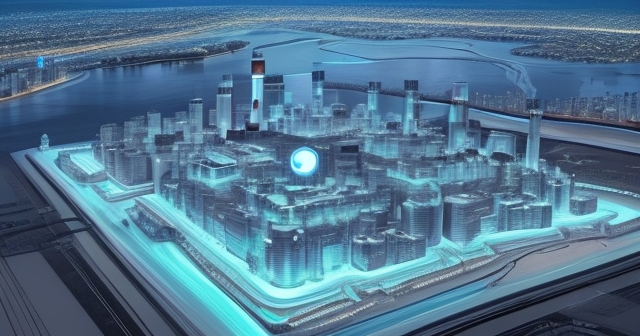
In addition to these primary sources, Lithium can also be found in clays (like Hectorite), geothermal fluids, and even potentially in seawater, though extraction from these sources is generally more complex and less developed economically at present.
When we look at global resources, it’s important to distinguish between “resources” and “reserves.” Resources are the total estimated amount of a mineral in the ground, regardless of whether it can be economically extracted today. Reserves are the portion of resources that *can* be economically and technically extracted under current conditions. Bolivia is often cited as having the world’s largest Lithium resources, primarily in the Salar de Uyuni. However, turning those resources into economically viable reserves and then into actual production faces significant challenges, including infrastructure limitations, political factors, and the specific chemistry of the brine. Chile and Argentina also boast massive brine resources.
| Country | Lithium Reserves (in tons) |
|---|---|
| Bolivia | 21 million |
| Chile | 9 million |
| Argentina | 7 million |
In terms of current *production*, the picture shifts slightly. Australia is the world’s leading producer of Lithium, primarily from hard rock spodumene mines. Chile is the second largest producer, extracting Lithium from its rich brines in the Atacama desert. China is the third largest producer, drawing from both domestic hard rock and brine resources and also playing a dominant role in processing Lithium compounds and battery manufacturing. Other significant producing countries include Argentina, Brazil, and Zimbabwe.
The concentration of resources and production in a few key countries naturally creates geopolitical and economic dynamics. Nations highly dependent on Lithium imports for their technology industries closely watch supply developments and seek to diversify their sources, including exploring domestic potential or investing in overseas projects. We see how geography directly influences the global energy and technology landscape.
Getting Lithium Out: Conventional Extraction Methods and Their Challenges
Extracting Lithium from the ground and refining it into a usable form, such as Lithium carbonate or Lithium hydroxide (the forms most commonly used in batteries), is a complex and resource-intensive process. The specific methods used depend heavily on the type of deposit – hard rock or brine.
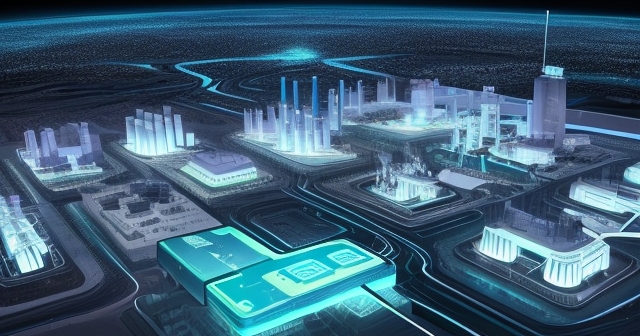
Hard Rock Extraction (e.g., from Spodumene):
This method involves mining the mineral ore, crushing it, and then processing it to concentrate the Lithium-bearing mineral (like Spodumene). This concentrated mineral typically undergoes a pyro-metallurgical process, which involves heating the Spodumene to very high temperatures, often exceeding 1000°C, in a kiln. This step is crucial to change the crystal structure of the mineral, making the Lithium accessible for subsequent chemical extraction. This “roasting” process is highly energy-intensive. After roasting, the material is typically treated with harsh chemicals, such as sulfuric acid, in a process called acid leaching. This dissolves the Lithium, separating it from other minerals. The Lithium-rich solution is then purified through various chemical steps to remove impurities before the Lithium is precipitated as Lithium carbonate or further processed into Lithium hydroxide. The entire process is complex, requires specialized equipment, and can take several hours or even days for the chemical conversion and purification stages.
Brine Extraction:
Extracting Lithium from brines is often considered less costly on a per-tonne basis than hard rock mining, but it is typically a much slower process. The most common method involves pumping the Lithium-rich brine from underground reservoirs into large evaporation ponds. These ponds, often covering vast areas in arid regions, rely on solar evaporation to concentrate the Lithium and other salts in the brine. As the water evaporates, different salts precipitate out at different concentrations, allowing for a sequential separation process. This natural evaporation can take many months, or even years, depending on the climate and the initial concentration of Lithium. Once the Lithium is sufficiently concentrated, the remaining brine is transported to a processing plant for further purification and precipitation of Lithium carbonate or Lithium hydroxide using chemical reagents like sodium carbonate or calcium hydroxide.
Both conventional methods have significant challenges. Hard rock mining is energy-intensive, relies on high temperatures and strong acids, and generates substantial solid waste (tailings) and greenhouse gas emissions. Brine evaporation requires vast tracts of land and consumes enormous amounts of water, a scarce resource in the arid regions where most brines are found. It’s also slow, meaning there’s a significant time lag between pumping the brine and producing battery-grade Lithium compounds, making it difficult to quickly respond to surges in demand.
The Environmental and Economic Footprint of Traditional Lithium Extraction
As we rely more and more on Lithium, the environmental consequences of conventional extraction methods are coming under increasing scrutiny. Both hard rock mining and brine evaporation leave a significant environmental footprint, raising concerns about sustainability and the true cost of the “green” energy transition.
For hard rock mining, the primary environmental concerns stem from the mining operation itself and the subsequent high-temperature processing. Open-pit mines can disturb large areas of land and require significant energy for excavation and crushing. The roasting process, involving temperatures over 1000°C, is energy-intensive and typically powered by fossil fuels, resulting in substantial CO2 emissions. Furthermore, the use of strong acids like sulfuric acid in the leaching process necessitates careful handling and disposal of hazardous chemicals and generates large volumes of solid and liquid waste. Managing these tailings and wastewater streams safely to prevent contamination of soil and water is a complex and costly endeavor.
| Extraction Method | Environmental Concerns |
|---|---|
| Hard Rock Mining | High CO2 emissions, chemical waste management |
| Brine Extraction | High water usage, impact on local ecosystems |
Brine extraction, while often having a lower direct carbon footprint per tonne than hard rock methods, faces different, but equally serious, environmental challenges. The most significant is water usage. Pumping vast quantities of brine to the surface and letting it evaporate in large ponds consumes massive amounts of water. In arid regions like the Atacama Desert, where water is already a precious resource needed by local communities and ecosystems, this can put severe strain on local water supplies and potentially impact wetlands and sensitive habitats. The evaporation ponds themselves occupy large areas of land and can visually alter the landscape. While brine operations don’t typically use strong acids in the same way as hard rock processing, they still involve the use of various reagents for purification, and managing the leftover concentrated brines after Lithium extraction can also pose environmental risks if not handled properly.
Economically, both methods require substantial upfront capital investment to establish mines, processing plants, and evaporation ponds. Operating costs vary, with brine extraction generally having lower operating costs than hard rock processing, particularly if it relies heavily on free solar evaporation. However, the lengthy processing time for brines means a slower return on investment and less flexibility. Permitting and developing new Lithium mines and processing facilities is also a notoriously long process, averaging around 16.5 years between discovery and production according to studies covering the period 2010-2019. These long lead times make it challenging for supply to keep pace with rapidly accelerating demand, contributing to price volatility and potential shortages.
These environmental and economic realities underscore the urgent need for more efficient, faster, and environmentally friendly methods of Lithium extraction. The sustainability of the clean energy transition hinges not just on developing renewable power sources and EVs, but also on ensuring the critical minerals they rely on can be sourced responsibly.
Innovating Extraction: Paving the Way for More Sustainable Supply
Recognizing the limitations and environmental drawbacks of conventional Lithium extraction, researchers and companies worldwide are actively developing and testing new technologies. The goal is to find methods that are faster, require less energy, use fewer harsh chemicals, consume less water, and can extract Lithium from a wider variety of sources, including those previously considered uneconomical.
One particularly promising innovation, highlighted by research from institutions like Penn State, focuses on developing acid-free, low-temperature, water-based leaching methods. Traditional hard rock processing requires roasting at over 1000°C followed by acid leaching. This new approach seeks to bypass these energy-intensive and chemically aggressive steps.
Consider the research led by Mohammad Rezaee at Penn State, which demonstrated a method to extract Lithium from hard rock minerals like Spodumene using simple water-based leaching at low temperatures (below 100°C) and common reagents like sodium hydroxide, rather than sulfuric acid. Their thermodynamic modeling showed that they could achieve high extraction efficiencies – over 99% in minutes – using this mild process. This is a dramatic improvement over conventional methods that take hours or days for the leaching step after high-temperature roasting.
How does it work? Instead of high heat and strong acid, this method involves selectively attacking the crystal structure of the Lithium-bearing mineral using specific chemical environments created with mild reagents in water. This allows the Lithium ions to be released into the solution without dissolving large amounts of other minerals or requiring extreme conditions. The process is simpler, uses less energy, eliminates the need for sulfuric acid (a major environmental and safety concern), and generates less hazardous waste. Furthermore, such water-based methods could potentially be adapted to extract Lithium from lower-grade ores, processing waste streams from existing mines, or even alternative sources like clay deposits, expanding the potential supply base.
Beyond this specific Penn State innovation, other areas of technological development in Lithium extraction include Direct Lithium Extraction (DLE) technologies for brines. Unlike traditional evaporation ponds, DLE methods use various techniques – such as adsorption, ion exchange, or solvent extraction – to selectively remove Lithium directly from the brine, leaving most of the water behind. DLE can potentially significantly reduce the land footprint and water consumption associated with brine extraction, and they are much faster, measuring processing time in hours or days rather than months or years.
These innovative technologies represent a potential paradigm shift in how we obtain Lithium. By reducing environmental impact, lowering costs, and speeding up processing times, they could play a crucial role in meeting future demand sustainably and alleviating potential supply bottlenecks. Investing in and scaling up these new extraction methods is becoming a priority for governments and the industry alike.
The Looming Supply Gap: Why Demand Outstrips Current Production
Despite the significant resources of Lithium found globally, the world is facing a projected supply shortage in the near future. This isn’t due to a lack of Lithium in the ground, but rather the immense speed at which demand, driven primarily by EVs, is accelerating compared to the much slower pace of bringing new production online.
Forecasts from various industry analysts and organizations, including the IEA and investment banks like Credit Suisse, consistently point towards a potential supply deficit starting as early as 2025. The number of electric vehicles on the road is growing exponentially, and battery manufacturing capacity is being built out at a rapid pace to meet this demand. However, increasing Lithium supply to feed these battery factories is a much more challenging task.
As we discussed, developing a new Lithium mine or expanding an existing operation is a multi-year process. Permitting can be lengthy, construction is complex and capital-intensive, and the ramp-up to full production takes time. The average lead time of over a decade means decisions made (or not made) years ago are impacting today’s supply. Even with increased investment and urgency, bringing significant new production online is a slow ship to turn.
| Challenge | Impact on Supply |
|---|---|
| Long permitting times | Delays in production ramp-up |
| Capital intensity | Higher costs disrupt investment |
This mismatch between rapid demand growth and slow supply response creates a structural deficit. Even established producers face challenges in scaling up quickly enough. Geopolitical factors, environmental concerns leading to protests or regulatory delays, and technical hurdles in optimizing extraction processes can all further slow down the increase in supply.
The potential supply gap has significant implications. It can lead to higher Lithium prices, which can, in turn, affect the cost of EV batteries and potentially slow down the adoption rate of electric vehicles, thus impacting climate goals. It highlights the strategic importance of Lithium and incentivizes countries and companies to secure long-term supply agreements and invest in mining projects.
Addressing this impending shortage requires a multi-pronged approach: accelerating the development of *new* conventional and unconventional Lithium resources, investing in and scaling up innovative extraction technologies (like DLE and the Penn State method), and improving battery recycling capabilities to recover Lithium from spent batteries. The supply challenge is not insurmountable, but it requires concerted effort and significant investment across the entire value chain.
Geopolitics and the Lithium Supply Chain
Given the concentration of Lithium resources and production in a relatively small number of countries, the Lithium supply chain is inherently linked to geopolitics. Control or significant influence over Lithium supply can translate into economic leverage and technological advantage on the global stage.
Countries with abundant Lithium resources, like Bolivia, Argentina, and Chile in South America, and Australia (for hard rock), find themselves in powerful positions as suppliers. However, turning resources into refined battery-grade Lithium often requires significant foreign investment and technical expertise. This creates complex relationships between resource-rich nations and countries with advanced processing capabilities and high demand, such as China, Japan, South Korea, the European Union, and the United States.
China, in particular, has strategically positioned itself to dominate not only Lithium processing but also the subsequent battery manufacturing. While Australia and Chile are major raw Lithium *producers*, a significant portion of their output is shipped to China for refining into battery chemicals. This gives China considerable control over the midstream and downstream segments of the Lithium supply chain, making many countries reliant on China for finished Lithium chemicals and batteries.
The United States, despite having domestic Lithium resources (primarily brines in Nevada and potential hard rock in other states), currently relies heavily on imports for battery-grade Lithium compounds. Recognizing the strategic vulnerability this creates, especially given the push towards domestic EV and battery manufacturing, the U.S. government has prioritized securing and developing domestic Lithium supply chains. This includes investing in domestic mining and processing projects and potentially revisiting regulations to streamline permitting for critical minerals.
The geopolitical implications are clear. Nations are increasingly viewing critical minerals like Lithium through a strategic lens, akin to how oil reserves were viewed in the 20th century. Ensuring secure and diversified supply chains is becoming a matter of national economic and energy security. This competition for resources and control over processing capacity adds another layer of complexity and potential volatility to the global Lithium market.
The Future of Lithium: Recycling and Technological Advancements
Looking ahead, the future of Lithium supply isn’t solely dependent on digging more out of the ground. Two other crucial areas are set to play increasingly important roles: recycling and the further refinement of extraction technologies.
Battery recycling is becoming a vital part of the sustainable Lithium ecosystem. As the first generation of large EV batteries reaches the end of its life (typically 8-15 years), there will be a growing stream of spent batteries containing valuable materials, including Lithium, Cobalt, Nickel, and Manganese. Efficiently recycling these batteries can recover a significant portion of these materials, reducing the need for virgin mining and mitigating the environmental impact of disposal.
| Material | Recycling Potential |
|---|---|
| Lithium | High |
| Cobalt | Very High |
| Nickel | Moderate |
Currently, battery recycling infrastructure is still developing, but significant research and investment are being directed into improving the efficiency and cost-effectiveness of Lithium-ion battery recycling processes. Recovering Lithium from spent batteries has historically been more challenging and less economically attractive than recovering other metals like Cobalt and Nickel. However, rising Lithium prices and environmental regulations are changing this dynamic, making Lithium recovery a more viable proposition. A robust recycling industry could help close the loop on the Lithium supply chain, creating a circular economy for battery materials.
Alongside recycling, continued advancements in extraction technologies, such as DLE and the low-temperature methods discussed earlier, promise to unlock new resources and make existing operations more efficient and environmentally friendly. As these technologies mature and are deployed at commercial scale, they could reduce reliance on traditional, high-impact methods, decrease processing times, and potentially lower costs. This could make marginal resources economically viable and broaden the geographic distribution of Lithium production beyond the current handful of leading countries.
Furthermore, research into alternative battery chemistries that use less or no Lithium is also ongoing, although Lithium-ion technology is expected to dominate for the foreseeable future due to its performance advantages. Nevertheless, innovation in battery design and materials is another factor that could influence long-term Lithium demand projections.
The future Lithium landscape will likely be a mix of traditional sources, advanced extraction methods, and a growing contribution from recycling. Navigating this evolving landscape requires a deep understanding of the technologies involved, the economic incentives, and the regulatory environment pushing for more sustainable practices.
Conclusion: Navigating the Essential Element’s Future
In concluding our exploration of Lithium, we see an element whose humble origins have given way to indispensable status in the 21st century. It is the linchpin of the battery technologies driving the global clean energy transition, essential for electric vehicles, portable electronics, and grid-scale energy storage. Yet, its importance extends further, playing a quiet but critical role in the nuclear industry for both existing reactors and future fusion energy ambitions.
We’ve learned that while Lithium resources are globally distributed, economically viable reserves and current production are concentrated in a few key regions and countries. The conventional methods of extracting Lithium from hard rock and brines, while foundational, are resource-intensive, time-consuming, and carry significant environmental footprints related to energy use, chemical waste, land use, and water consumption. These challenges contribute to the potential supply gap projected for the middle of this decade, where rapidly accelerating demand threatens to outstrip the pace of new production coming online.
However, the story of Lithium is also one of innovation and potential solutions. New technologies, such as advanced DLE methods for brines and revolutionary low-temperature, acid-free processes being developed for hard rock and other sources, hold the promise of more sustainable, efficient, and faster extraction. Coupled with the growing importance of battery recycling, these advancements could help alleviate future supply constraints and mitigate the environmental impact of meeting our Lithium needs.
For anyone looking at the future of energy, technology, or global markets, understanding Lithium is no longer optional; it is fundamental. Its supply chain is complex, influenced by geology, technology, economics, and geopolitics. The race to secure sustainable Lithium supply is a critical component of the broader race towards a decarbonized and electrified future. As we move forward, monitoring developments in extraction technology, recycling rates, and geopolitical dynamics will be crucial for understanding the market and investment potential surrounding this essential element.
lithium definitionFAQ
Q:What are the main uses of Lithium?
A:Lithium is primarily used in rechargeable batteries, electric vehicles, and in various industrial applications including lubricants and pharmaceuticals.
Q:Why is Lithium called “white gold”?
A:Lithium is referred to as “white gold” due to its increasing value and essential role in modern technology, similar to traditional valuable commodities.
Q:What challenges does Lithium extraction face?
A:Lithium extraction faces challenges such as environmental impacts, regulatory hurdles, resource concentration in specific regions, and technological limitations in extraction methods.
